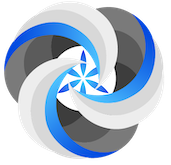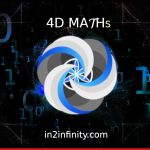Thoughts on artificial intelligence. I had a friend the other day, who drew my attention to the new artificial intelligence API that is being developed presently and released that will enable people to do incredible feats of computer computer calculation. Artificial intelligence has claimed that and I have responded to the guy that the computers can’t be artificially intelligent under the way that they are constructed, because they don’t know how to divide, which is a simple thing. And everyone who has intelligence knows how to divide, we can cut a cake into two, we can share, but computers don’t have a concept of this division into two. And therefore, we have programmed them to respond through language which is our language. And then we have to find an assembly language in order to translate that language into a machine code in such a way that the machine code can understand it and quite often for example, you know, if you look at basic letters, which is the foundations of all of this, you find that we use the ASCII code, and that’s like a kind of universal code using us for everybody almost. But there are exceptions. But, but what I was pointing out is that at the end of the day, we are using human language and generally programming in higher languages based on this translation to ASCII. For the very characters that we’re using, whereby in fourth dimensional mathematics, what we do is we talk directly in binary code. And by doing that, what we’re able to do is we’re able to track numbers in different types of ways. And we can teach computers mathematics properly, without having to go through the explanations of multiplication and powers just to kind of confirm that an equation is true presently you could say that a lot of communication itself is not happening in binary code, because it’s not considered to be an easy language to understand for humans. However, in fourth dimensional mathematics, binary code makes complete and utter sense and is a mathematical system that is come because it is contained within the infinite if you like, that piece infinity also is as base 01. So we can know that because basically, the space reciprocal space between zero and one has an infinite number of numbers. And we can represent that space with a 101. It’s better to represent it as 101 because in that way, computers will have have to hold just a one rather than a 00 is a more energy consuming for any event. What we can say is using ordinal numbers that those that you find in fourth dimensional mathematics, we can place a one followed by an infinite number of zeros technically, only to put another one at the end and we have a kind of counting system of zeros. And it’s this counting system of zeros that allows us to broadcast zero etc. And so once we have this counting number of zeros, then we have to explain to the computer what they can do with that counting. And they can do division and they can do multiplication, and they can do divide and it could do all the other things. And what this means is, is that just through re engineering things directly into binary we we circumnavigate the need for any kind of human kind of intervention between the computer and the mathematic and this is really where fourth dimension mathematics starts to come into its strength, because it acts as a scope into which we can start to make fourth dimensional calculations and speak that scope directly to binary code. Therefore, due to the simplicity of this nature, because we can you know, I can build a small quantum calculator that can transmit both ordinal and, and time, time and space numbers basically ordinal and cardinal numbers. And I can transmit and it can take and computers can keep track of both of those no problem. In fact, they’re very good at keeping track of vectors. So you know, display in our memory is a little bit difficult to track a vector in their memory, not too much of a problem. And so what we can do is we can teach, let’s say we teach just basic mathematics and then from basic mathematics, you can extend to pretty much anything you know, and that starts with plus or minus one which is very, very simple algorithm. And, and what do we have to have divided which is, you know, dividing into two and dividing into three and once we have those principles in place, you know, computers will begin to be able to communicate with us in different kinds of ways in mathematical ways rather than just us always going through a language barrier. In order to get the things that we want, because we can’t code in machine language we think, but that’s actually not true. You know, the full dimensional calculator allows us to calculate in this language, and it allows us to produce predictable results, and we can unwind those results back to zero as well. Back to the normal numbers. So therefore, we have a new methodology of calculation. We can manifest primes and all of that stuff. So computers can be taught what primes are and everything without having to do extraneous calculations. So that that just wraps up why artificial intelligence isn’t art isn’t really that great at the moment. The thing that makes our system very different in fourth dimensional mathematics is that we have art artificial intelligence with a heart. That might sound a bit strange at first, but it’s just how the system works. Really. What we do is we build array of CPUs that we will organise in a quantum four dimensional space, and that pumps time function through it, which becomes the heart function and then we have a kind of computer brain on top of that, which sort of, you know, decodes and does all the mathematical bits as the brainy part. And that’s another computer if you like, it could be on a network, but they could be all contained in one box. You know, it’s any that we have limitations in our sort of construction at the moment of quantum computing, which we’ll see you know, become, once we do some demonstrations of new technology, I’m sure the benefits to the technology industry will become apparent. Anyway, that’s just a few thoughts on fourth dimensional mathematics and its implications for computing and true artificial intelligence with a heart believe it or not, that actually pumps in rhythm to time itself. Well, thank you very much for listening and this has been a calling power broadcast from into infinity. If you want to know more about fourth dimensional mathematics, you can find that at in2infinity.com as in number to infinity, of course, has to be a number two doesn’t it.com Okay, thank you very much for listening, and we’ll catch up with you next time, Bye bye
Prime number structure
Hi, and welcome to another broadcast from inter infinity, where we’re talking about fourth dimensional mathematics. And today we’re having


